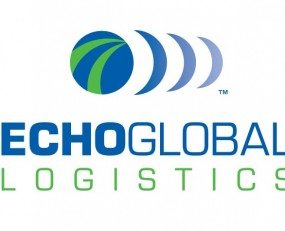
It is no mystery that Chicago-based Echo Global is targeting inorganic growth to bulk up and create value for shareholders.
Echo needs to grow swiftly and has been successful so far, although its share price has been volatile in recent months and still trades some 30% below the 52-week high of $34.3 that it hit in the summer of 2015.
“The first quarter of 2016 represents the twenty-sixth consecutive quarter of year-over-year total revenue growth,” the group said on 27 April when it reported its latest figures.
A sustained growth rate came in the wake of acquisitions, with its latest deal being the purchase of Command, a Skokie-based truckload freight brokerage company which had net sales and EBITDA of $102m and $37m, respectively, in 2014. The target had 572 employees when Echo acquired it, with 504 of them working in sales.
The deal gave Echo a nice boost, particularly because market conditions remain challenging. Its first-quarter volume gains were offset by lower rates, while the year-on-year drop in fuel prices “impacted top line revenue by an estimated $26m in the first quarter 2016”, Echo noted at the time.
Its main revenue driver, the truckload unit, into which Command was consolidated, saw revenues rise 73% to $274.6m from $157.6m one year earlier, while the growth rates of revenues for less-than-truckload (LTL, $105.8m revenues) and intermodal ($17.7m) were 1.5% and 9.7%, respectively.
Total quarterly sales stood at $405m, up 43% year-on-year, while net revenues rose 51.8% to $80.8m from $53.3m one year earlier.
As it grows, Echo must remain profitable to deliver shareholder value; however, its commission expenses margin – commission expenses divided by net revenue – rose to 30.7% from 28%, and was only partly offset by lower selling general and administrative expenses as a percentage of net revenues, down 160 basis points year-on-year.
Non-GAAP EBITDA surged 43.7% to $16.5m from $11.5m one year earlier, but EBITDA margin fell 120 basis points to 20.4%, while the impact on non-GAAP pre-tax profit (PTP) margin was more pronounced, with PTP margin down 230 basis points.
Net income was $7.1m, up 30.2% year-on-year, but net income margin fell to 8.8% from 10.3% one year earlier, while fully diluted earnings per share soared 4.5% to $0.24 from $0.23. Finally, operating cash flow rose to $14.3m from $9.4m one year earlier, which boosted its free cash flow (FcF) profile, with FcF up to $10m from $6.6m year-on-year.
Source: Transport Intelligence, June 21, 2016
Author: Alessandro Pasetti